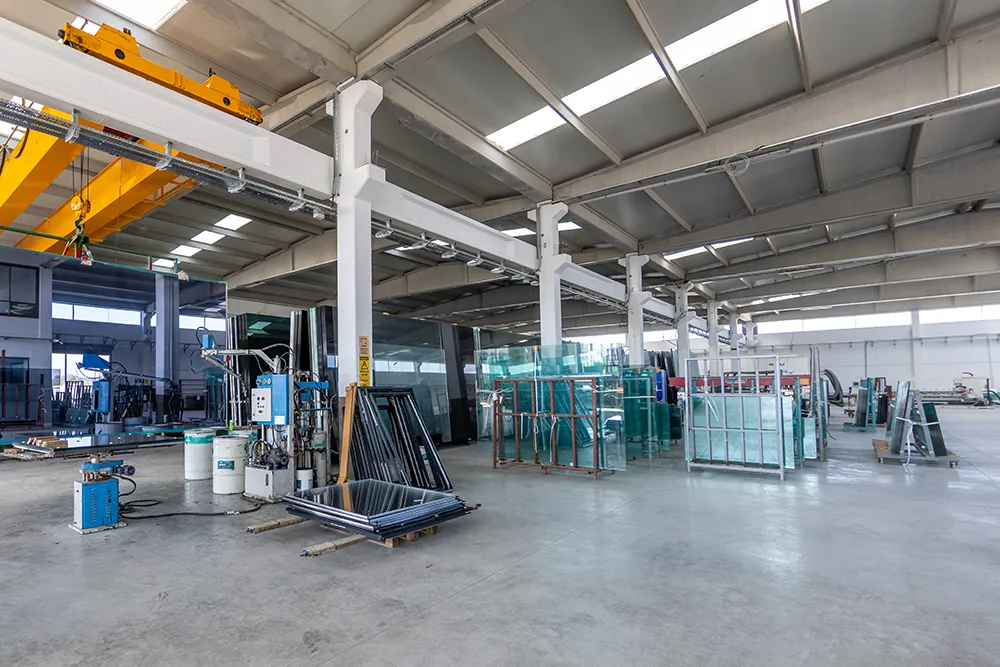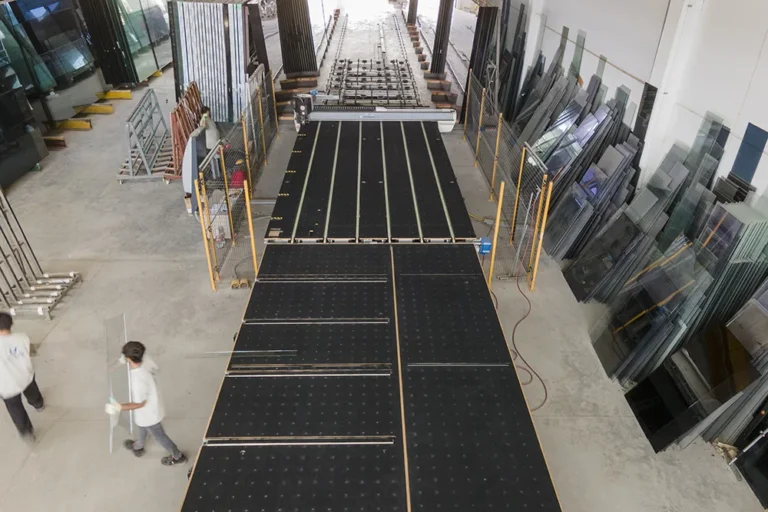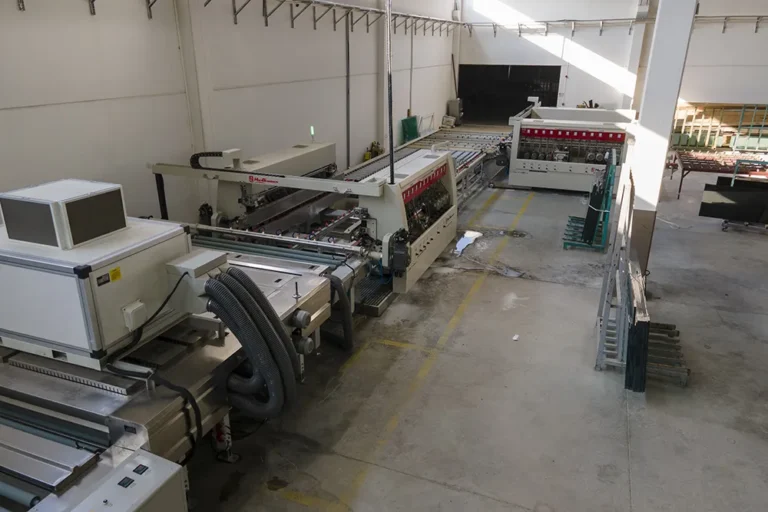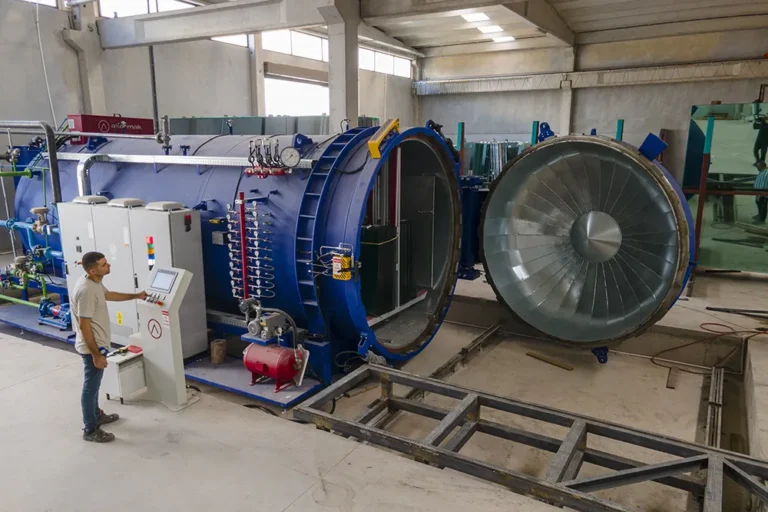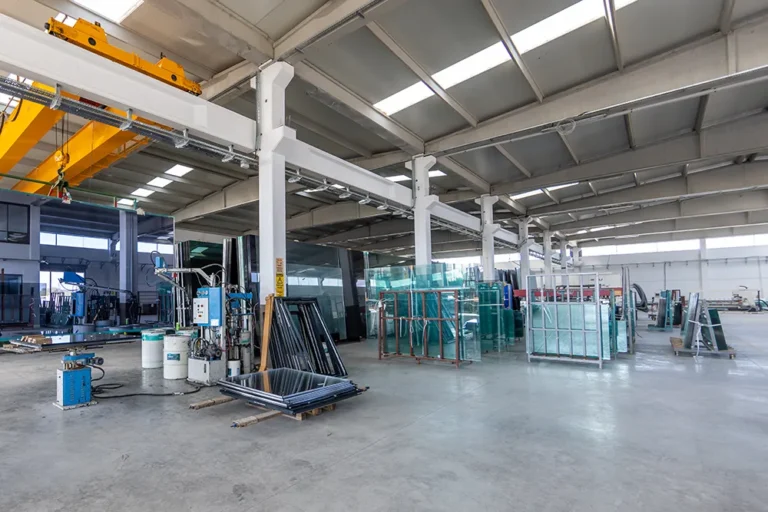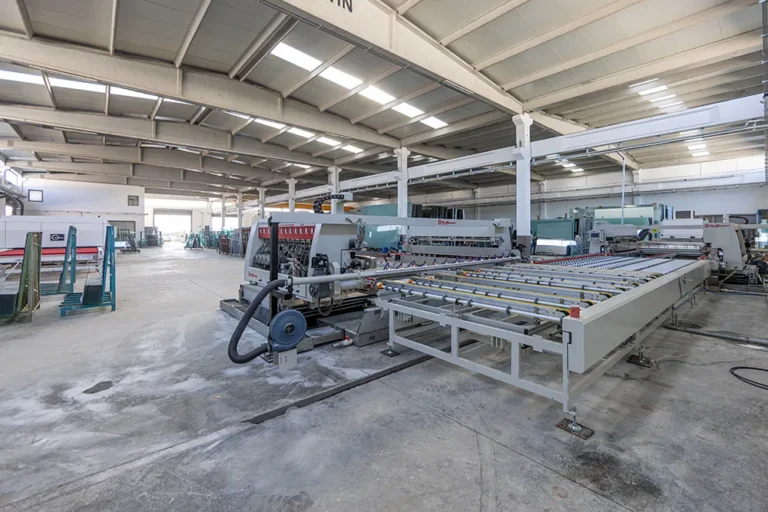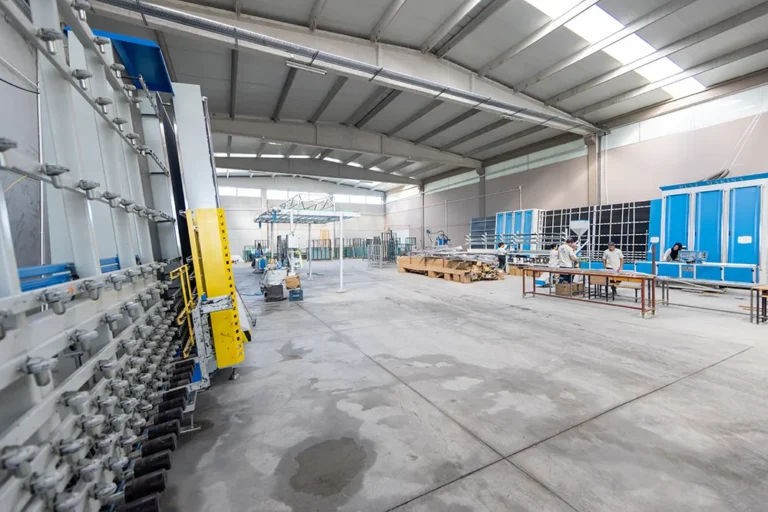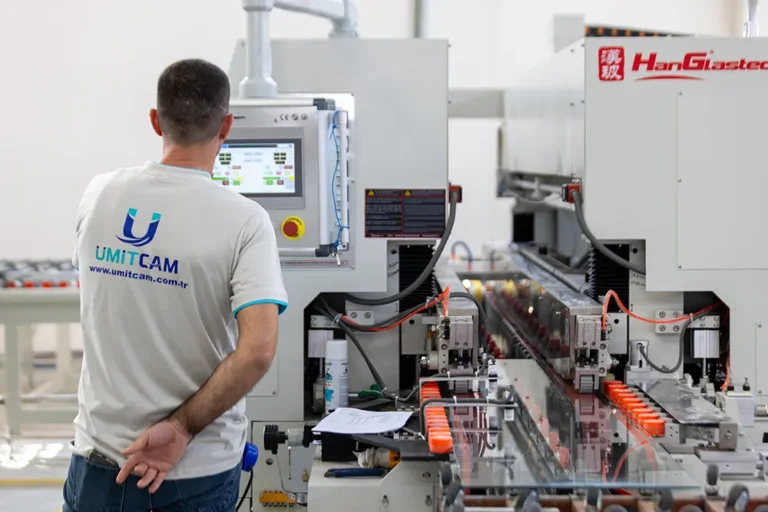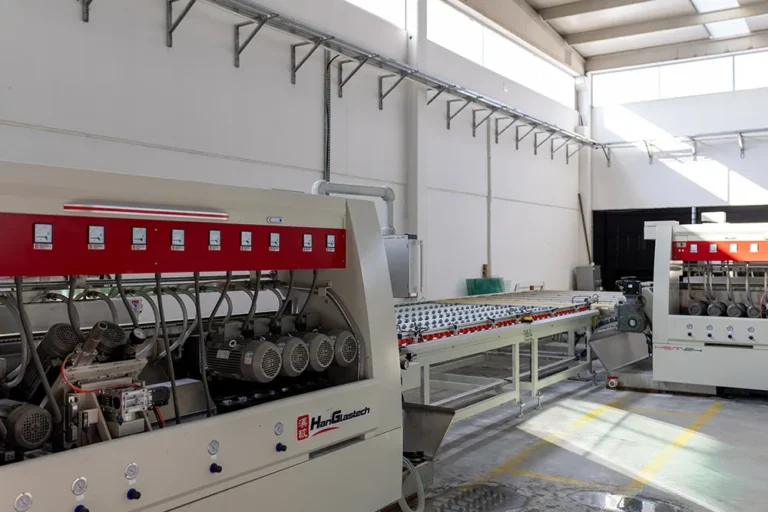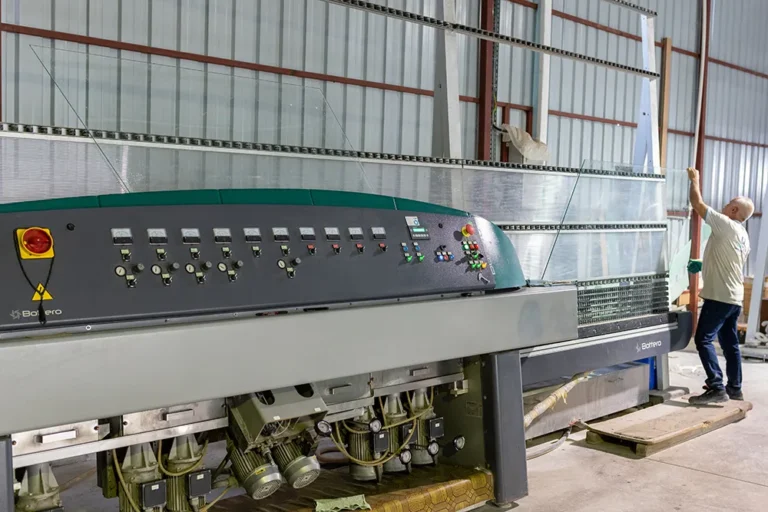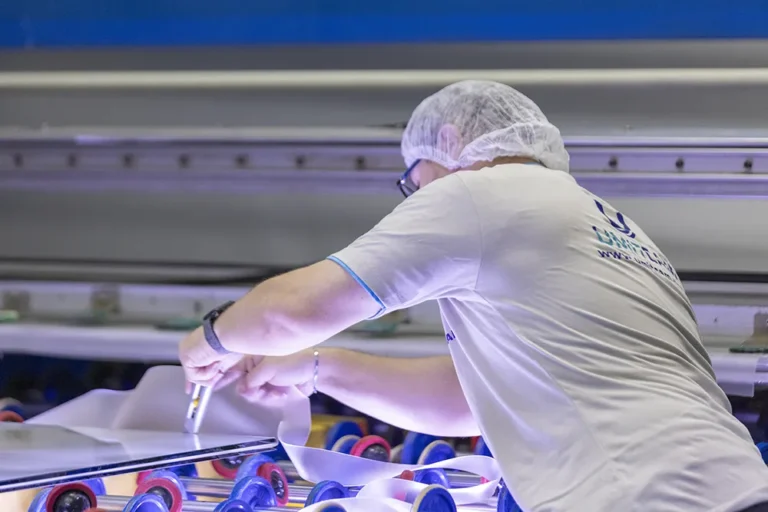24/7 Live Support
- Contact us Çıplaklı Mh. 2144 Sk. No:29 Organize Sanayi Bölgesi Döşemealtı / ANTALYA
- Call Us +90 (242) 221 21 10
- Write to Us info@umitcam.com.tr
Insulating Glass S Series

Definition
Insulating Glass Systems S Series are produced with Şişecam Low-E Glass with high quality heat control coating. It reduces your fuel costs by providing maximum heat insulation.
Insulating Glass Systems are produced by Insulating Glass Authorized Manufacturers who are regularly audited by Şişecam Flat Glass.
The Isıcam brand is the assurance that glass and ancillary materials are used in appropriate quality and quantity, and that production is carried out continuously under appropriate conditions and using modern technologies.
Isıcam Sistemleri, üretim kaynaklı hatalara karşı 10 yıl süreyle Isıcam Yetkili Üreticisinin garantisindedir.
Advantages
Reduces heat losses by 50% compared to ordinary double glazing and reduces fuel costs.
It allows you to benefit from the sun's heat at maximum level while not compromising on light transmittance.
It prevents window fronts from getting cold in winter and delays fogging compared to ordinary double glazing.
Compared to ordinary double glazing, the expenditure you will make for Insulating Glass S will return to you in 1-2 years with the savings you will make on fuel in winter.


Safety + Security
Produced using Şişecam Low-E Glass, which provides heat control, and Şişecam Laminated Glass, which provides safety and security, the Insulating Glass unit prevents injuries that may occur by preventing the glass from scattering in case of breakage, in addition to the savings it provides in fuel costs.


Safety + Security + Noise Control
Produced by using Şişecam Low-E Glass, which provides heat control, and Şişecam Acoustic Laminated Glass, which provides noise control, the Insulating Glass unit reduces noise transmissions by providing sound insulation in addition to the savings it provides in fuel costs, and has the safety and security feature of Şişecam Laminated Glass.


Safety
It is produced using Şişecam Temperable Low-E Glass (heat control coated glass) that provides safety. It is suitable for use as safety glass as it reduces the risk of injury by breaking into small and blunt pieces when broken. It saves fuel with its maximum temperature control feature.


Maximum Insulation
It is a triple Insulating Glass unit that provides maximum thermal insulation. It provides 4 times heat insulation compared to ordinary double glazing.


Solar Control with Tinted Glass
Produced using Şişecam Low-E Glass, which provides heat control, and Şişecam Tinted Float Glass, which provides solar control, the Isıcam unit limits the solar heat input into the building, controls the excessive brightness of the sun, and reduces cooling energy consumption and therefore cooling costs in air-conditioned environments, in addition to the savings it provides to fuel costs.


Reflective Sun Control
Produced using Şişecam Low-E Glass, which provides heat control, and Şişecam Tentesol and Şişecam Tentesol Titanium, reflective glasses that provide solar control, the Insulating Glass unit limits the solar heat input into the building, controls the excessive brightness of the sun and reduces cooling energy consumption and therefore cooling costs in environments where air conditioning is used. Due to its reflective feature, it creates a mirror effect when viewed from the direction where the light is strong. It provides visual integrity in commercial buildings with glass facades.
By choosing your insulating glass according to the climatic conditions of your region, you will provide the most accurate and efficient insulation.
In new or renovated residential and commercial buildings, you will get additional benefits when you use it together with Safety and Security glass, Noise Control glass and Solar Control glass according to your needs.
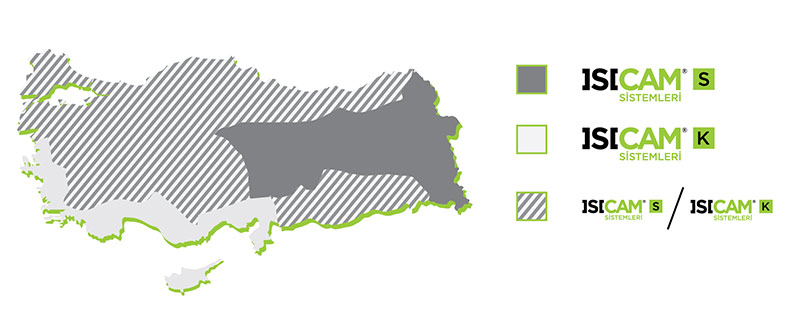
Insulating Glass Systems is an insulating glass unit consisting of two or more glass plates produced and/or sold by Şişecam Flat Glass and brought together under factory conditions to accommodate dry air or gases suitable for ambient pressure.
Performans Tablosu

Up= 2.4 W/m²K value (glass + joinery, heat transmission coefficient of windows) recommended for new buildings in TS 825 Thermal Insulation Rules Standard can be achieved with Isıcam S and Isıcam K.
Low-E coating is on the 2nd or 3rd surface in Insulating Glass S units.
In Isıcam S combinations to be made with colored glass, the rated/performance values given according to the combinations of products with colorless glass may vary.
National / International Standards to which Insulating Glass Complies
TS EN 1279 - Glass - Used in Buildings - Glass Insulation Units Standard
National / International Standards for Raw Materials Used
Glass
Float TS EN 572/2
Glass in market supply and final cut sizes TS EN 572/8
Frosted TS EN 572/5
Tempered TS EN 12150
Partially tempered TS EN 1863
Laminated TS EN ISO 12543
Coated TS EN 1096
Thermally tempered and heat-tempered soda lime silicate safety glass TS EN 14179
Other Raw Materials
In the production of insulating glass; butyl, polysulfide (thiokol), silicone, polyurethane, dehumidifier and spacer lath (profile) are used in the Insulating Glass Material List prepared by Şişecam Flat Glass. In the event that the sealing materials used are replaced with other brand sealing materials provided that they are included in the Insulating Glass Material List, the substitution requirements specified in Annex D of the TS EN 1279-1 standard must be fulfilled.
Insulating Glass Quality
Optical and Appearance Quality of Insulating Glass
Point Defects
Optical and appearance quality of insulating glass is defined in TS EN 1279/1. Accordingly, the optical and appearance quality given in the relevant standards of the glasses that make up Insulating Glass is valid
As the appearance and quality of the single plates are such that they do not exceed the maximum permissible defect limit for the insulating glass unit, no additional requirements are necessary in this respect. However, a higher level of acceptance may be included in the quality agreement between the customer and the manufacturer of the insulating glass unit.
Detailed information on the optical and appearance quality of insulating glass due to its natural structure and / or physical properties is given in TS EN 1279-1 Annex F.
Acceptance levels in TS EN 1279-1 are valid as point defects in insulating glass.
Produced and/or sold by Şişecam Flat Glass Solar Low-E, Low-E, above the line reflective solar control coated glass produced by the coating of insulating glass units, TS EN 1096 Coated glass standard tolerances apply.
Linear (Scratch and Scrape) Defects
Optical and appearance quality of insulating glass is defined in TS EN 1279/1. Accordingly, the optical and appearance quality given in the relevant standards of the glasses that make up Insulating Glass is valid.
As the appearance and quality of the single plates are such that they do not exceed the maximum permissible defect limit for the insulating glass unit, no additional requirements are necessary in this respect. However, a higher level of acceptance may be included in the quality agreement between the customer and the manufacturer of the insulating glass unit.
Detailed information on the optical and appearance quality of insulating glass due to its natural structure and / or physical properties is given in TS EN 1279-1 Annex F.
The acceptance levels in TS EN 1279-1 are valid as linear defects in insulating glass.
Other Defects
As it is known, the separating material (lucite powder, paper, etc.) placed between the plate glasses prevents the glasses from rubbing against each other and protects the glass surface against humidity and temperature changes. The powder or paper placed between the glasses is of a composition that will not damage the chemical structure of the glass in terms of its properties, and no powder or paper is used. The grain size is as important as the chemical structure of the powder used. For this reason, the paper and powder to be placed between the glasses are specially selected and controlled.
Corrosion failure occurs as a result of the deterioration of the chemical structure of the glass due to the condensation of moisture in the air or wetting in the point-worn areas formed by the friction of the glass plates. The corrosion defect appears as white spots on the glass in the advanced stage. In the initial stage, it may not be visible to the naked eye. For this reason, it should be checked whether the corrosion has started or not, by vaporizing the glasses from time to time from a close distance. Corrosion failure is not allowed in the insulating glass unit. For this reason, care must be taken in the storage and transportation of glass packages. Especially in the winter months, when glass packages are taken into operation, the package should not be opened and processed until the package temperature reaches the ambient temperature.
The glass plate surfaces facing the gap must be free of dust, dirt, putty smudges, fingerprints, etc.
PROCESSING AND APPLICATION
Insulating Glass Edge Features
Glass
The edges of the glass should be cut straight and there should be no nicks or chips that could cause the glass to break. To reduce the risk of breakage and cracking due to thermal stress, etc., it is recommended that laminated glass be deburred (tape grinding) or polished.
Insulating paste (butyl)
It should be drawn smoothly and without interruption, especially in the corners. Butyl weight should be 2.5 g/m on both sides of the profile. Butyl width should be at least 3 mm in the pressed unit.
In gas-filled units, the butyl weight should be at least 3.0 g/m on both sides of the profile and the width should be at least 4 mm in the pressed unit.
Insulating and bonding paste polysulfide (thiokol)/silicone/polyurethane
It should not escape from the profile edge into the unit. Thiokol/polyurethane gap is at least 3 mm and silicone gap is at least 6 mm. For insulating glass used in structural glazing, the design criteria specified in the project are applied.
Gaz dolgulu ünitelerde thiokol ya da poliüretan boşluğu en az 4 mm olmalıdır.
Ara boşluk çıtası (Profil)
Profilde kabul edilebilir sehim (doğrultudan sapma), kenar uzunluğu 3.500 mm’den küçük camda en fazla 4,0 mm, daha büyük camda en fazla 6,0 mm olabilir.
It is recommended to use a bent profile for gas filled units. If a cut profile is used, the top of the clip (the surface that will be in contact with the outer insulation paste) should be covered with some butyl at the corners where the clips enter the profile.
Edge stripping
When producing insulating glass with soft coated glasses such as Low-E, Solar Low-E, the edge of the coated glasses should be edged with a 10 mm wide edge stripping process if production will be made with polyurethane or polysulfide, and 13 mm wide edge stripping process if production will be made with silicone.
Pressure Compensation Application in Insulating Glass
Insulating glass units may undergo deformation due to differences between the atmospheric pressure at the production site and the atmospheric pressure at the assembly site and on the route during transportation. Pressure equalization is performed to prevent this.
Conditions requiring pressure equalization
If the altitude of the place where the insulating glass unit will be installed is 1200 meters or higher and 500 meters or lower than the altitude of the place where it is produced, the unit should be pressure balanced regardless of the unit size and glass thickness; If it is higher than 700 meters to 1200 meters and lower than 300 meters to 500 meters, it should be decided whether pressure balancing should be done by considering the width / height ratio of the unit.
Regardless of the altitude of the place where the unit will be assembled; regardless of the altitude of the place where it will be shipped; If it passes through places with an altitude of 1200 meters or higher and passes through places with an altitude of 500 meters or lower, the unit must be pressure compensated regardless of the unit size and glass thickness; If it passes from 700 meters to 1200 meters at higher altitudes and if it passes from 300 meters to 500 meters at lower altitudes, it should be decided whether the unit should be pressure compensated by considering the width / height ratio of the unit.
In cases where this ratio should be looked at:
If one side of the insulating glass unit is less than 700 millimeters, all such units are pressure compensated regardless of the width/height ratio. For example, an insulating glass unit of 1250×695 mm should be pressure compensated. If the width to height ratio of the insulating glass unit is 2 or greater than 2, all of these units are pressure compensated. For example, a 1500 x 720 mm unit with a width / height ratio of 2.1 should be pressure compensated.
If the width / height ratio of the insulating glass unit is less than 2, these units are not pressure compensated. For example, if the width to height ratio of a 1300 x 720 mm unit is 1.8, it will not be pressure compensated.
Pressure equalization is applied as follows.
The short side profile of the unit to be pressure balanced (dehumidifier unfilled side) is drilled at a suitable point.
A balloon or valve is inserted into this hole.
A sufficient amount of butyl, external insulating paste (black and white paste separately) is sent in bags or jars with the drilled insulating glass.
At the place where the insulating glass will be installed, the balloon or valve in the hole is removed immediately after the glass is shipped.
Heat a piece of butyl on a screwdriver to soften it and close the hole on the slat.
On a clean piece of glass or ceramic, mix 10 parts white and 1 part black insulating paste (Thiokol, silicone, polyurethane) homogenously and cover the butyl.
The insulating glass is inserted into the joinery after the insulating paste has dried, with the sealed hole on the top or side edge.
Insulating Glass Stock Instruction
The following rules should be observed when stocking insulating glass units.
Stacking should not be done directly on concrete or earthen ground; in wet and damp places.
Insulating glass should be stocked on pallets placed close to vertical (~10° angle) on the long side and perpendicular to the pallet base.
A separator (e.g. cork wedge) should be placed between each unit to prevent direct contact between the lenses.
The back of the units should be leaned against the pallet, point loadings and the single glass of the Insulating Glass unit touching the base should be avoided. Otherwise, swelling may occur due to pressure change and breakage may occur as a result of 2-3 times force loading.
Değişik boyutlu Isıcamların istiflenmesinde küçük boyutlu camlar büyük boyutlu camların önüne gelmeli, göbekten basmayı önlemek için iki camın arasına uzunlamasına latalar konmalı, lataların arası 50 cm’yi aşmamalıdır.
Isıcam üniteleri direkt güneş altında stoklanmamalıdır. Sıcaklığın etkisiyle ısınan her cam şişme nedeniyle diğerini sıkıştırarak kırılmalara neden olabilir. Ayrıca güneş altında stoklanan renkli veya reflektif camların arası yeteri kadar havalanamayacağı için ısıl kırılmalar olabilir.
THICKNESS AND DIMENSIONS
Standard Thickness and Dimensions
Dimensional tolerances of insulating glass (according to EN 1279)
The tolerances in TS EN 1279-1 Article 6.3 are valid.
Insulating glass unit thickness tolerances
The tolerances in TS EN 1279-1 Article 6.3 are valid.
Tolerance of misalignment between insulating glass unit plates
The tolerances in TS EN 1279-1 Article 6.3 are valid.
Our Production Capacity and Facility
We operate in our 10,500 square meter factory located in Antalya Organized Industrial Zone.
Our production includes insulating glass production, tempered glass production, laminated glass production, painted glass production and mirror types.
With 2 insulating glass production lines, we have an average daily production capacity of 1200 square meters of glass.

CONSULT OUR EXPERT
We are here for you
Don't make a decision without consulting us
Customer Feedback








